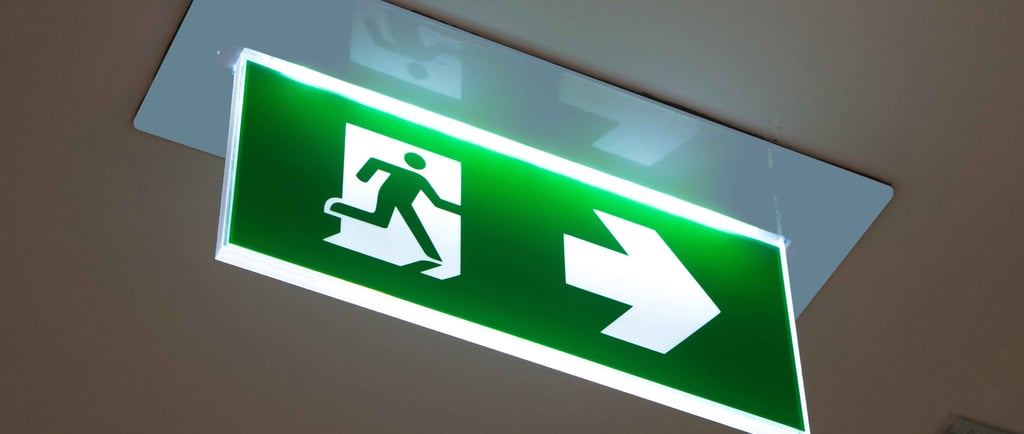Emergency Lighting
Another short post on the purpose of and requirements for emergency lighting in the UK
Jim Ascroft
6/5/20252 min read


In the UK, emergency lighting requirements, outlined in standards like BS 5266, aim to ensure safe evacuation during power outages or emergencies.Key aspects include providing adequate illumination along escape routes
(1 lux), in open areas (0.5 lux), and near exit doors, with lights lasting for a minimum of 3 hours. Signage must also be illuminated and clear.
In the UK, emergency lighting is legally required in most non-domestic buildings, under the Regulatory Reform (Fire Safety) Order 2005. This order mandates that emergency routes and exits must be indicated by signs and illuminated with adequate emergency lighting. Specifically, the following are requirements:
Scope:
The requirement applies to most non-domestic buildings, excluding private residential dwellings.
This includes businesses, schools, hospitals, and entertainment venues.
Emergency Lighting Standards:
BS 5266-1:2016:
This British Standard provides specific guidance on emergency lighting design, installation, testing, and maintenance.
Illumination Levels:
Escape Routes: A minimum of 1 lux at floor level along the centerline of escape routes (corridors, stairwells, etc.).
Open Areas: A minimum of 0.5 lux at floor level in open areas, excluding a 0.5m border around the route.
High-Risk Task Areas: These areas require a minimum of 10% of the average normal lighting level.
In the UK, emergency lighting should be tested monthly (a "flick test") and annually (a full discharge test).
The monthly test ensures the lights function correctly when the main power supply fails. The annual test verifies that the batteries can provide the required duration of light, typically 1 or 3 hours, as specified by the relevant British Standard.
Monthly Test ("Flick Test"):
A quick check to ensure the emergency lights turn on when the main power is switched off using a key switch. This test is usually done at least once a month.
Annual Test ("Full Discharge Test"):
A longer test (1 or 3 hours) that simulates a power outage to ensure the emergency lights can provide the required illumination for the specified duration. The test is typically performed annually.
Visual Inspection:
A visual check of the emergency lighting units should also be performed at least annually to ensure they are clean and undamaged.
Services
Expert electrical solutions for homes and businesses.
Contact
About
jim@kaimelectricallimited.co.uk
07525364945
© 2025. All rights reserved.
